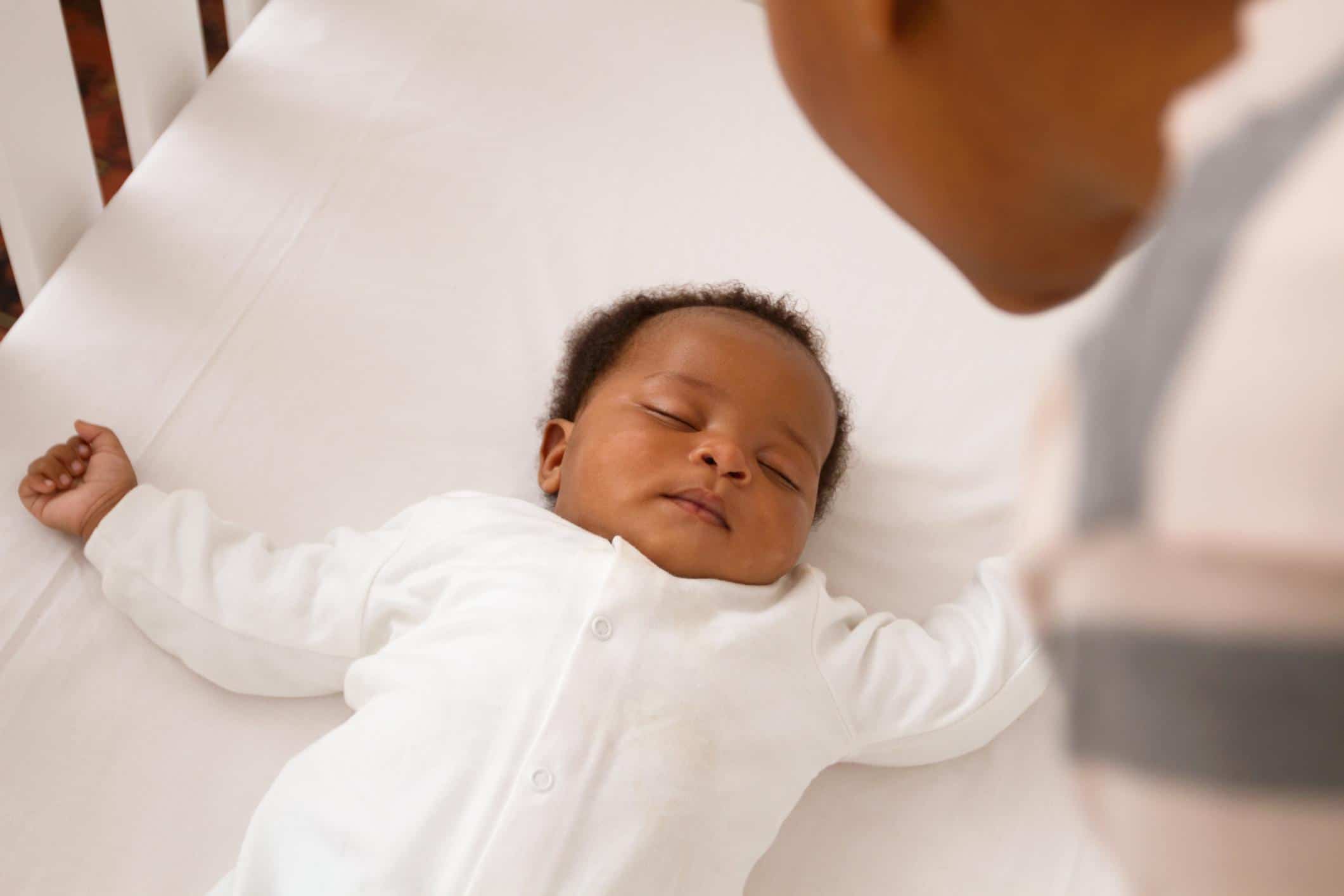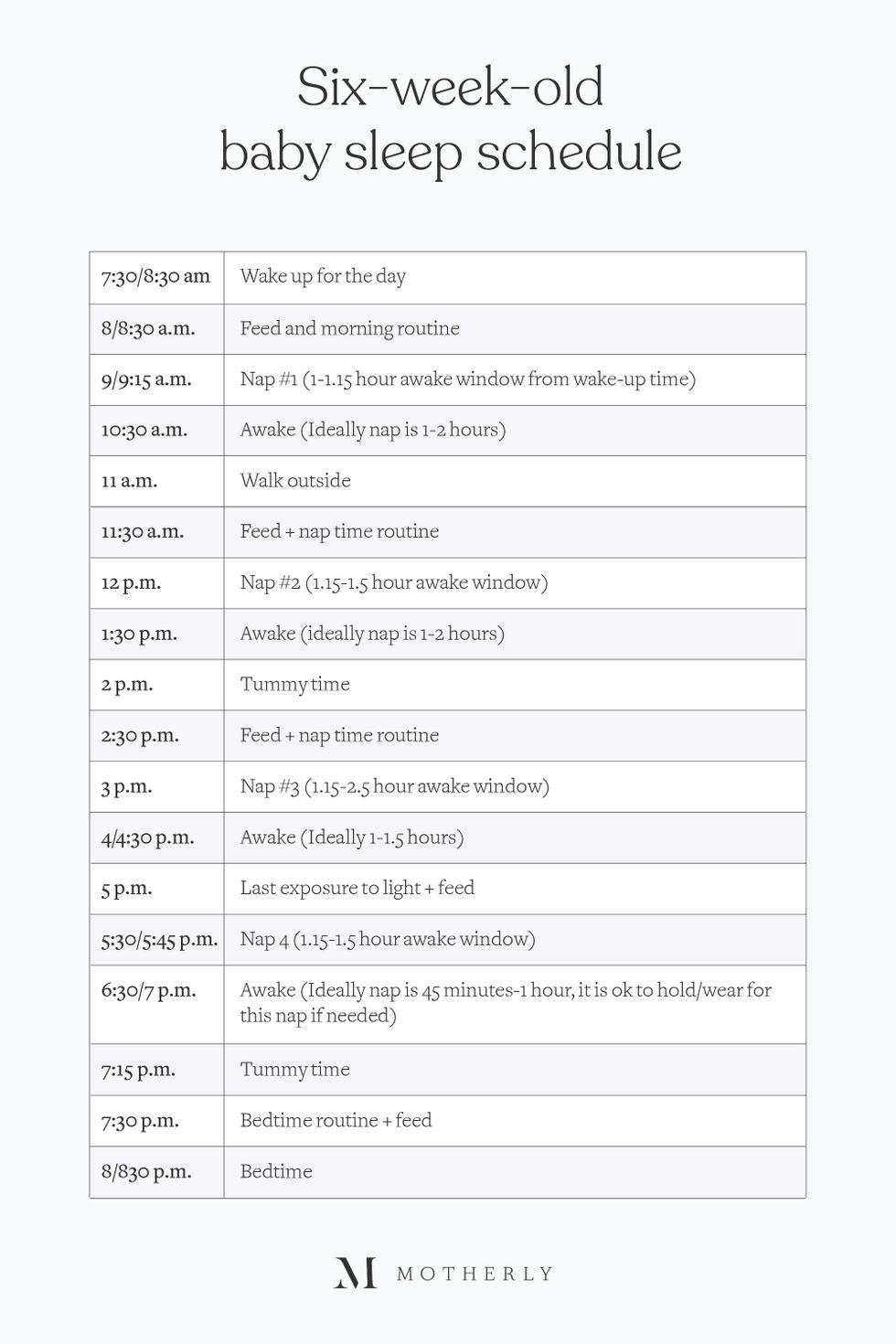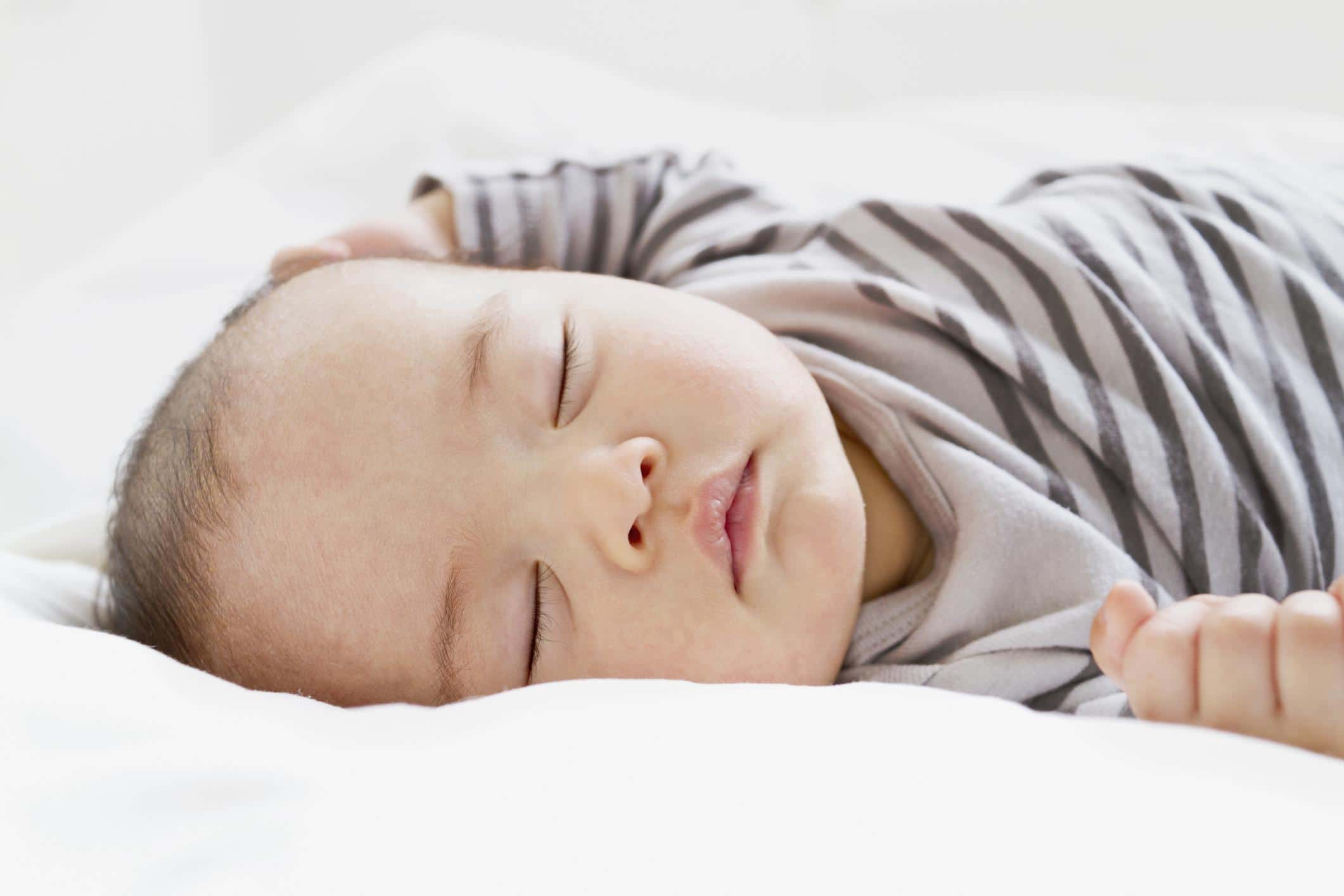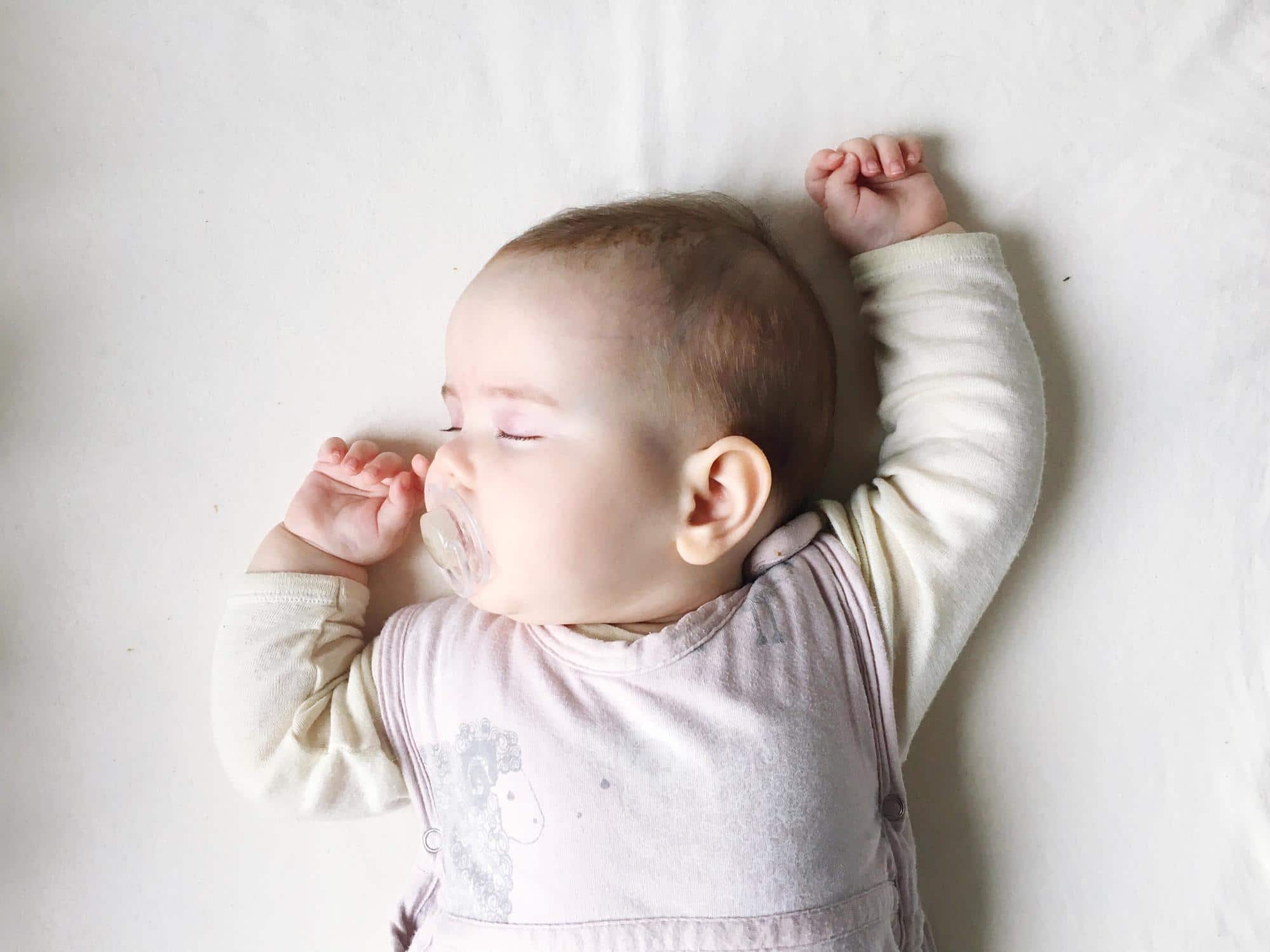How much sleep does a six-week-old baby need?
Expert guidance tips on your newborn's sleep schedule.

You’ve made it to week six, and if your baby’s an early learner they might have gifted you with that first precious social smile. If not, don’t worry! Most infants hit this milestone between six to eight weeks. As you continue to get into a groove with your baby, you may be wondering if there’s supposed to be some sort of pattern with sleep at this age (because it seems like they’re snoozing constantly, yet you somehow never sleep).
To help you navigate these early weeks of newborn sleep, we’ve put together a handy sleep schedule of how much your six-week-old is sleeping, plus some tips on these early days of sleeping. We know it seems overwhelming right now, but you’ve got this, mama!
Related: Baby Feeding Guides & Schedules
How much sleep does a six-week-old baby need?
You may be sleep-deprived these days, but your new baby needs lots of zzz’s. According to the American Academy of Sleep Medicine, a newborn should get 12-16 hours of sleep per 24 hours.
“At six weeks old your baby is likely going through their first major development leap and you may start to see longer stretches of sleep at night (between 4-6 hours) more consistently,” says Rachel Mitchell, founder of My Sweet Sleeper. “Your baby will also start to become more alert and aware of their surroundings during the day, which means those 3-hour naps may start to become less frequent.”
With so much time dedicated to sleep, you may be wondering when you’ll have time to feed, change, bath and engage with your little one. That’s where we come in. We’ve put together a sample sleep schedule of what one 24-hour period with a six-week-old baby would look like. (Note: this is meant to be a rough guide of what you can expect a day to look like, but it is not meant to be a sleep schedule you put your baby on.)
Six-week-old baby sleep schedule

“This is also the time that your baby’s peak fussy period can start which can cause them to become really fussy in the evening and you may see they start to fight the last nap of the day. If this is happening, it is completely OK to hold or babywear for that last nap,” says Mitchell. “Continue to practice a later bedtime (between 7:30-9:30 pm) and make sure that you are consistent with your nightly routine. Offering a luke-warm bath, dimming the lights, and turning on white noise in the evening can also help with your baby’s fussy periods as well as nursing or feeding if needed. Remember that nursing to sleep in this stage is still completely normal and encouraged on occasion, especially if it helps settle your baby during this fussy period.”
Related: 2-month-old baby milestones
Wake windows for a six-week-old
If you’re not yet familiar with the term “wake window,” it’s the period of time a baby can stay awake in between naps without getting overtired. Newborns are unable to self-regulate their sleep patterns, so instead of simply just falling asleep, they can become overtired. And that’s not good for anyone!
Though each baby is different, most newborns can’t stay awake longer than 45 minutes (the average wake window for a six-week-old baby is 30 minutes). This is the time where you’ll be able to change their diaper, feed them, bathe them, and/or stimulate them with songs, books, tummy time, or whatever you’d like before it’s time to snooze again.
Sleep tips for newborns:
As you work on creating a daytime and evening sleep schedule for your baby, establish a bedtime routine and hopefully get a bit more sleep yourself, it’s important to consider the following sleep tips for newborns as well:
- Always place your baby on their back to sleep, not on the stomach or side. This helps to reduce the risk of Sudden Infant Death Syndrome (SIDS) and Sudden Unexplained Infant Death (SUID). The American Academy of Pediatrics initiated the “Back to Sleep” movement in 1992, and rates of SIDS/SUID have decreased dramatically since.
- Do not put anything else in the crib or bassinet. Keep plush toys, pillows, blankets, loose sheets, and bumpers out of your baby’s crib or bassinet for similar reasons as above.
- Avoid overheating. Even though they’re itty-bitty babies, you can dress them according to the room’s temperature. Don’t over-swaddle or over-layer their clothing.
- Try a pacifier. If they reject it, that’s OK. If it falls out, that’s OK. If you’re breastfeeding, you may want to wait until baby is comfortable with latching and effectively nursing before introducing a pacifier.
- Use a white noise machine. Whether your house is quiet as a mouse, or you’ve got other kids running around making noise, a white noise machine can help your baby feel soothed (and possibly tune out) in their surroundings.
- Snuggle it up. Your newborn wants your cuddles as much as you want to give them—especially if they’re fussy. Swaddle them up snugly, then rock them until they quiet down. There’s no such thing as holding a newborn too much (for safety reasons, don’t fall asleep with them in your arms).
A version of this story was published August 24, 2021. It has been updated.


